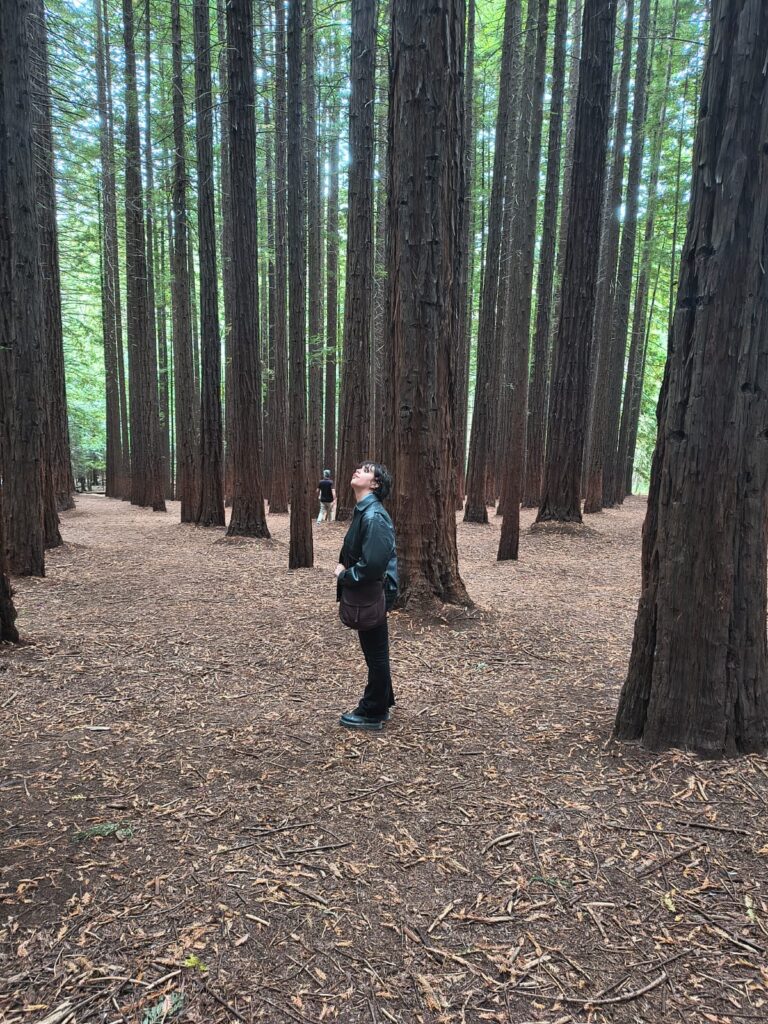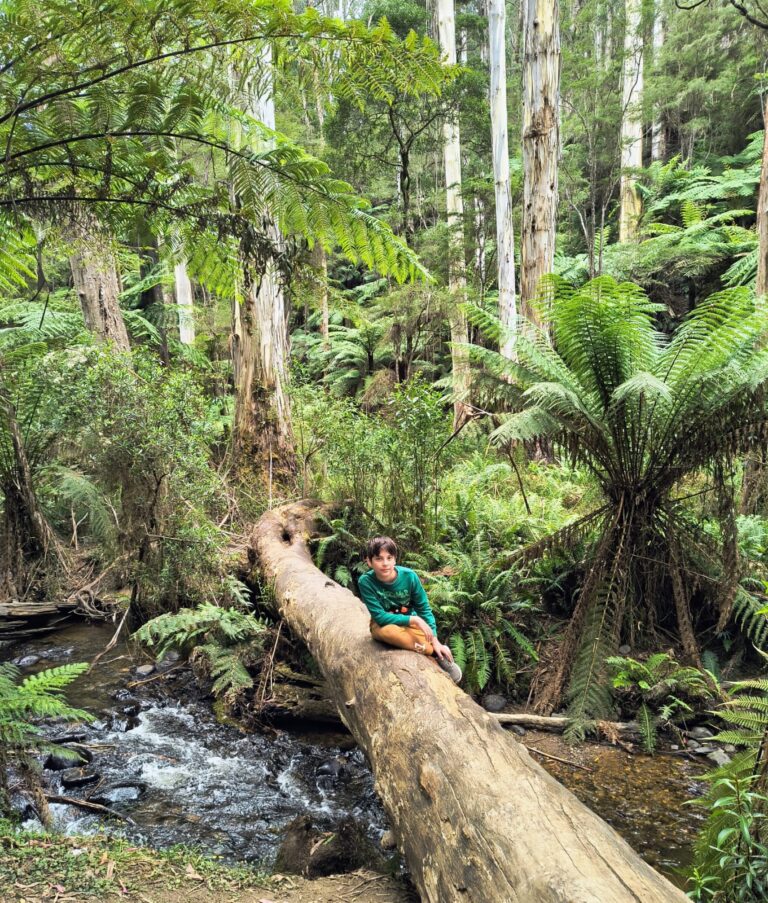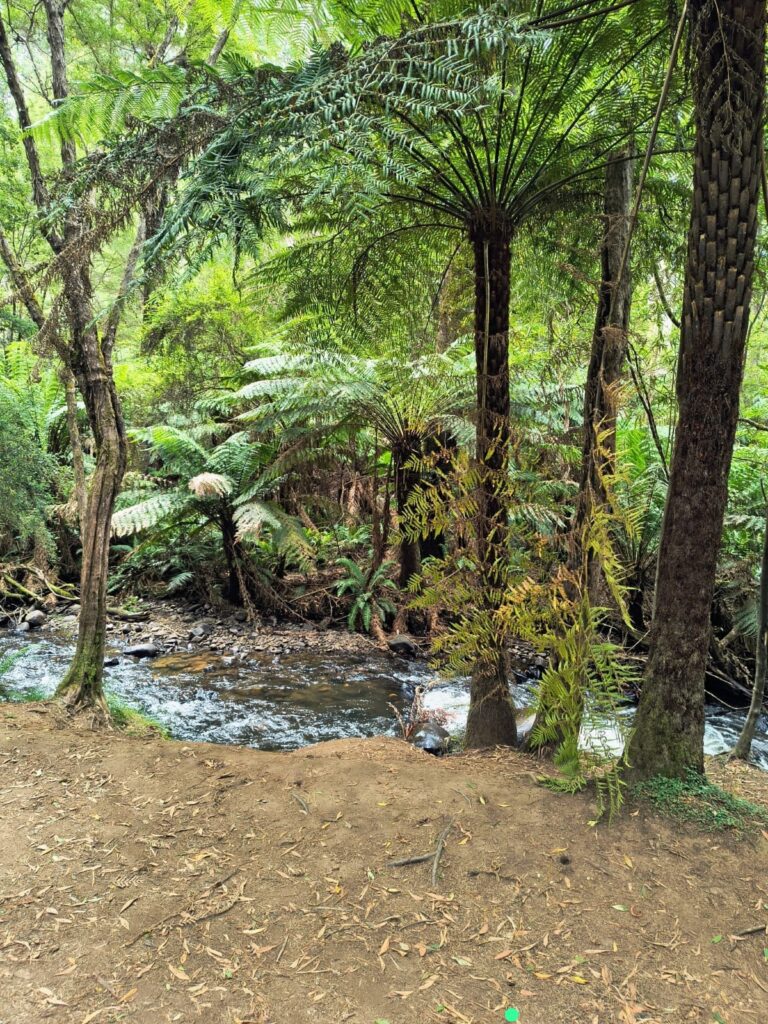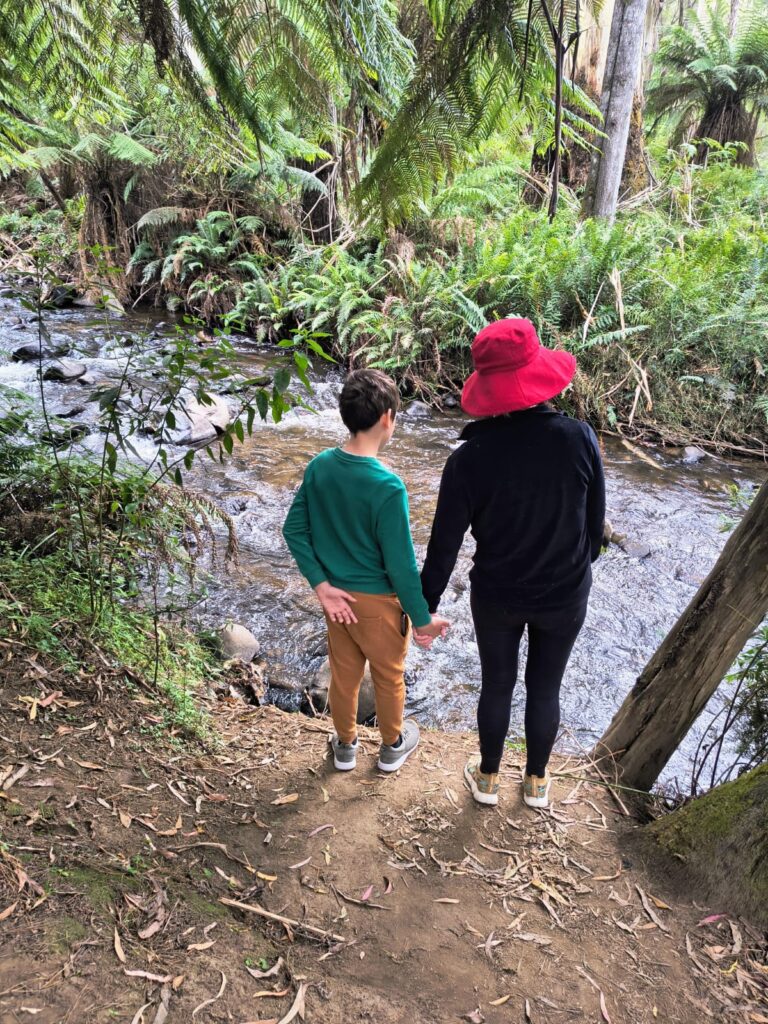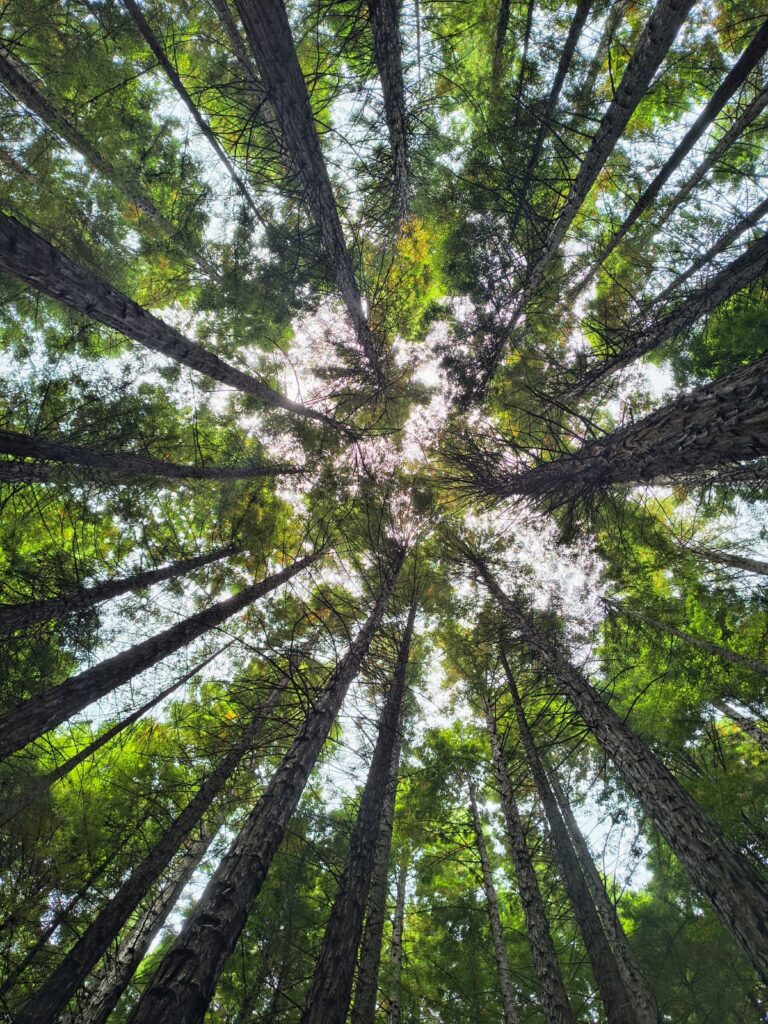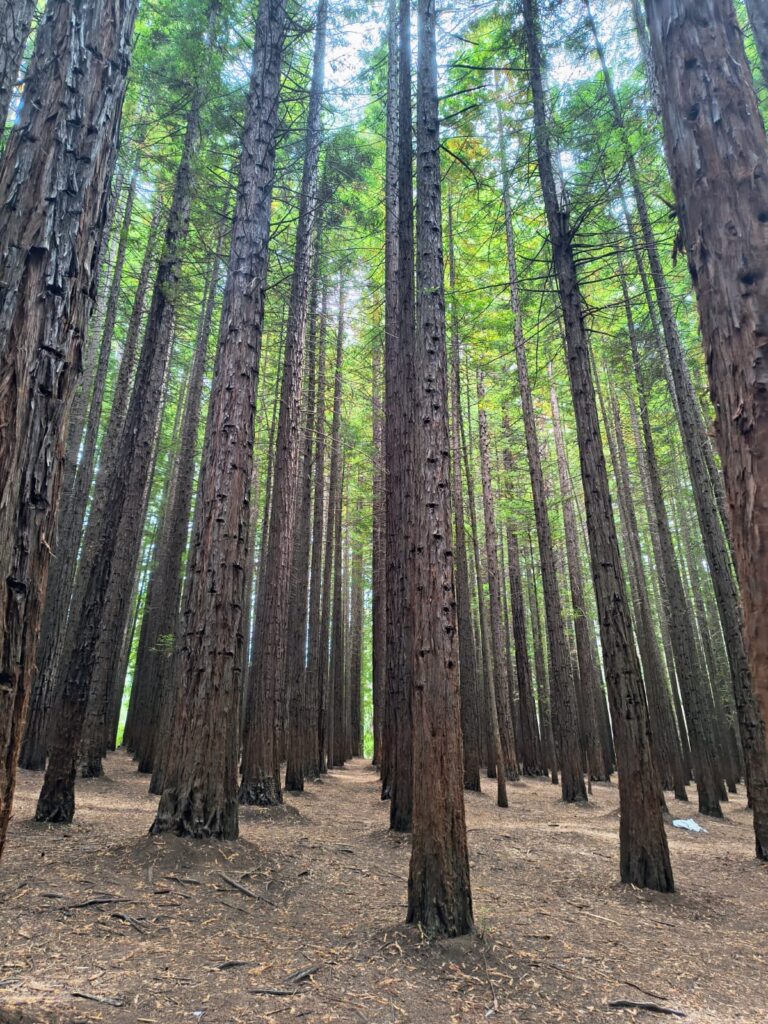Warburton
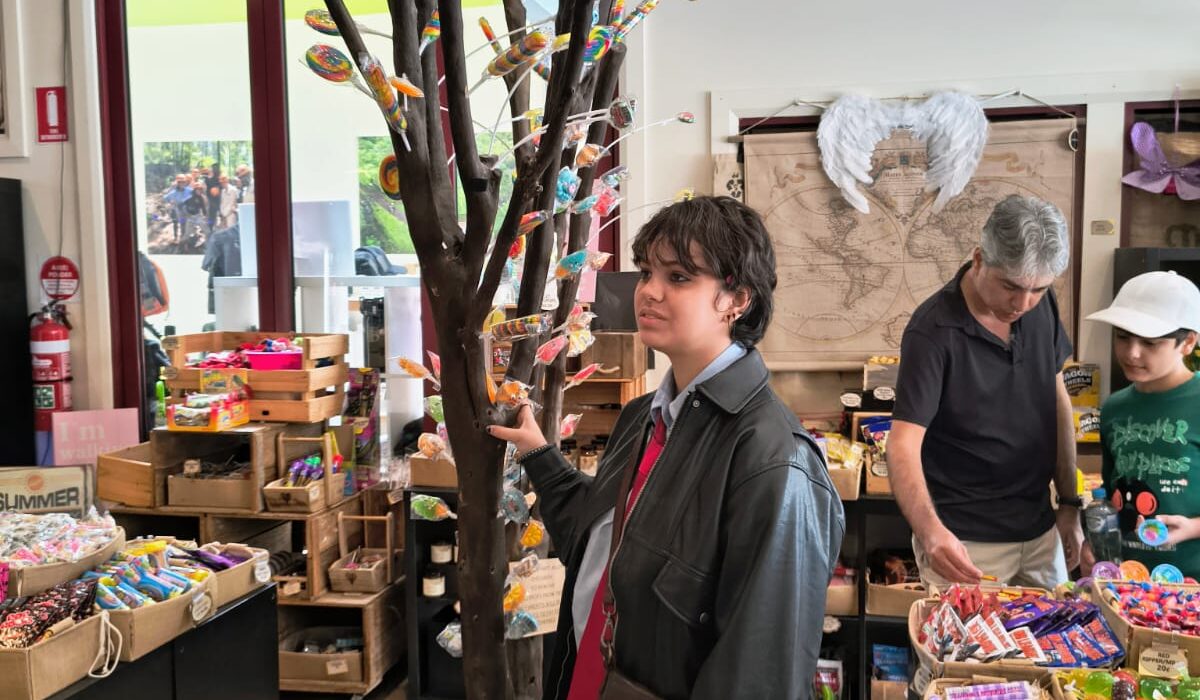

My husband has a new (used) car and the kids have one holiday weekend left before school resumes, so we decide to take a day-trip that is not too far from home.
Warburton sounds ideal, not only because of its proximity to Melbourne, but also because my grandparents met in its Seventh-day Adventist church in 1942, returning when my grandfather was the general doctor in the Warburton Seventh-day Adventist hospital. For the rest of her life, my grandmother enjoyed recounting how once, called upon to carry out a post-mortem, he required her, as his newly-married wife, to ‘hold the head.’ As we head towards the shadowy outlines of Donna Buang and Mount Victoria we are, for a variety of reasons, quite tense. My daughter would have liked more time to apply her eyeliner. My son, hot and carsick, wants to stop. My husband wants to keep going, while I’m upset that we didn’t leave earlier, since I want to be back in Melbourne for a 4pm yoga class. But once we reach Millgrove, a tiny township just 3 kilometers away from Warburton, we all cheer up. I’m particularly delighted by a massive dahlias and roses in a central park, while my kids are more excited by an adjoining public toilet.
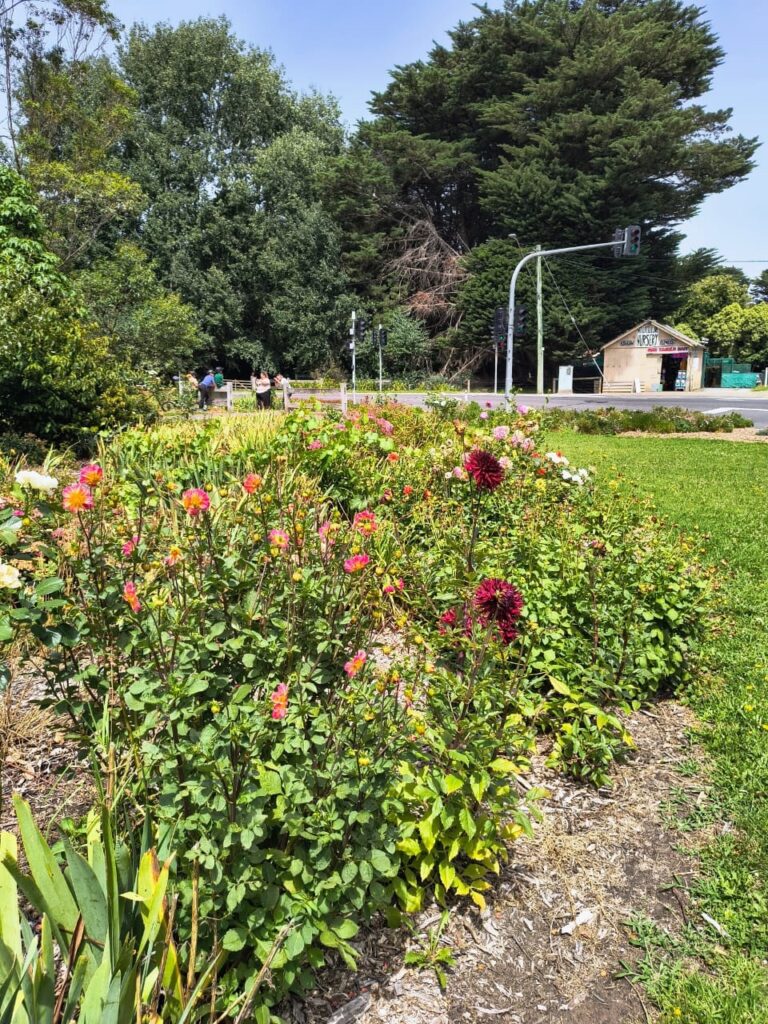
Hunger, it turns out, was the root of our misery. While my husband and kids stock up on pasties, sandwiches and coffee, I pop into Cookie Grove Artisan Ice Cream shop and chat with Blair, the friendly owner, about his ice-cream making process and whether there is a limit to the number of free tastes he is prepared to offer prospective customers.
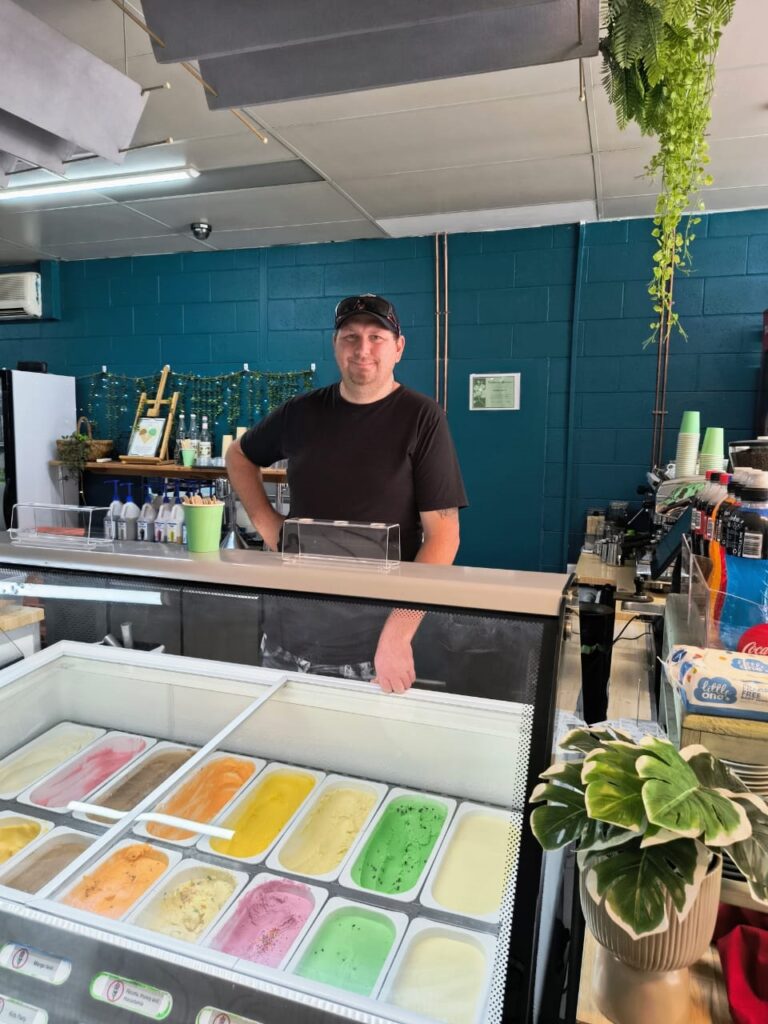
Blair says that he doesn’t normally set limits on freebies, and offers me a taste off orange choc-chip and honey and ricotta. He uses as many local ingredients as possible, in fact the ricotta in the ice-cream comes from Mill Grove Dairy, which is just a few shops down. This truly wonderful artisan cheese company and delicatessen, owned by Peter and Nickie (who are both in the shop) is crammed with delights for the whole family.
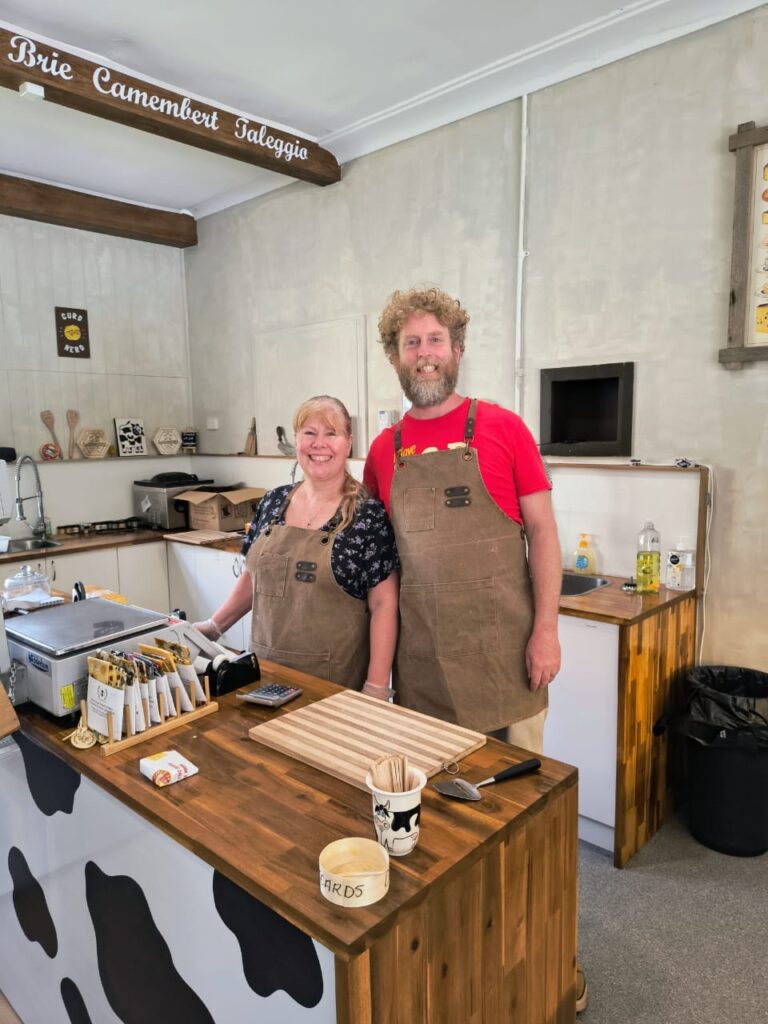
I taste the Gouda and a sharp, rich blue cheese. My son and daughter find crackers, pickles, and tiny plastic animals, and my husband hurries us out of the shop and on the road to Warburton before we can dent the budget any more seriously. On Warburton Main Street there is something for everyone: a bookshop that also sells flowers and accessories for those who wish to perform magical tricks, The Quirky Fox Emporium for antiques, collectables and oddities, The Warburton Candy Emporium, The Chookhouse for bargains (my son snaps up a pair of foam airoplanes) and more.
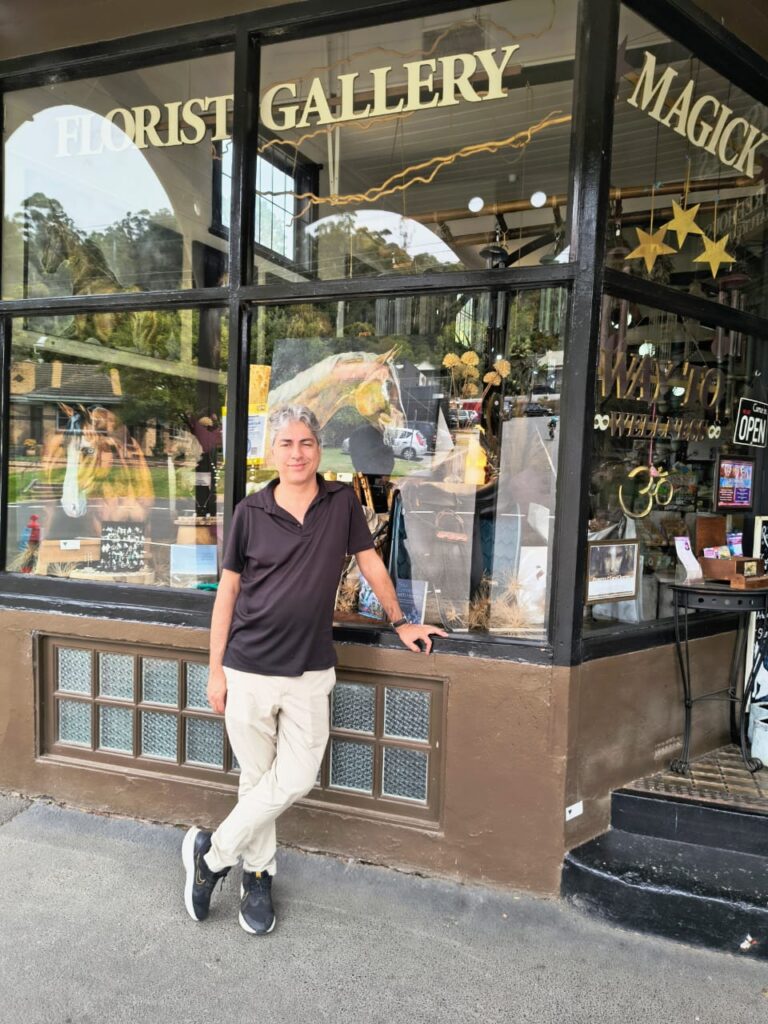
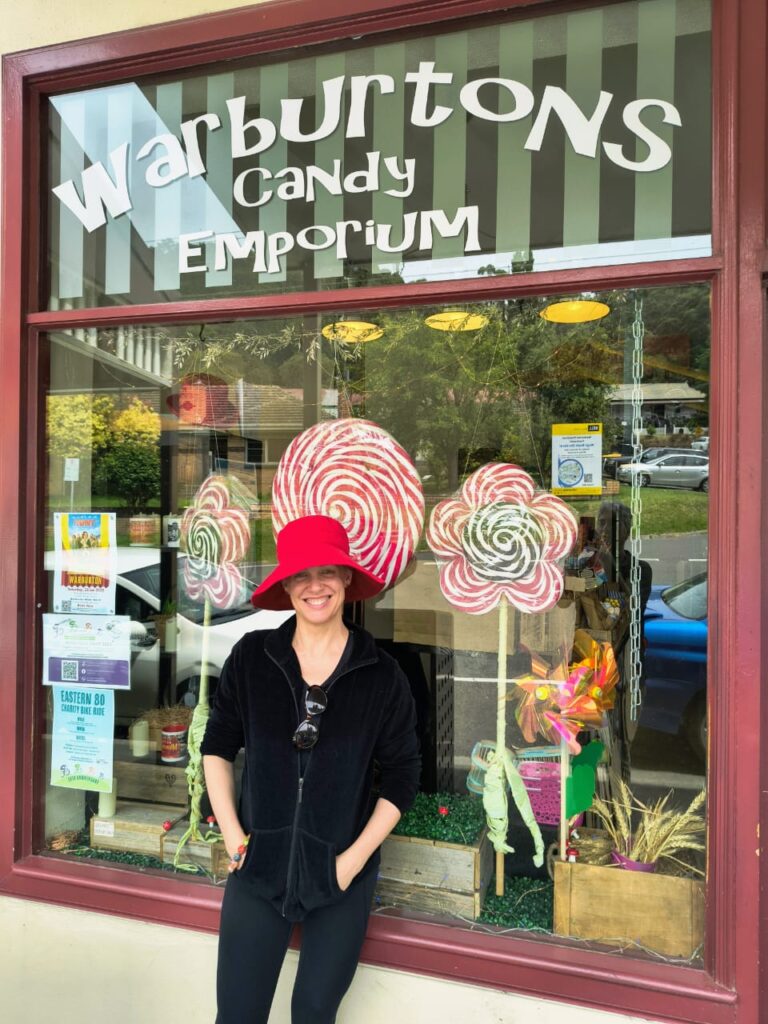

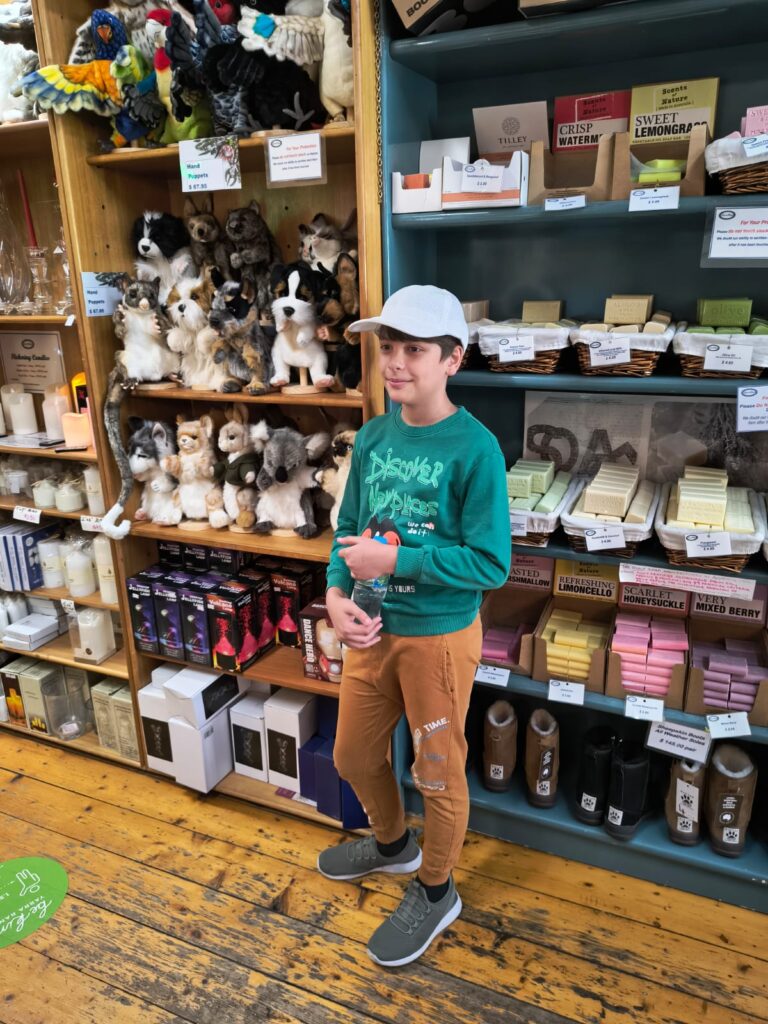
Even though we are in a hurry to get to the Redwood Forest and eat lunch, as we pass the Seventh-day Adventist Church I ask my husband to stop. While I’m taking pictures an old man arrives, and we have a short chat. Stan is an old-timer of the church. He says that the church is quiet, since the Seventh-day Adventist Hospital and Sanitarium factory closed, but he attends church on the Sabbath, and is relieved that the old people’s home is still open and that the Signs Publishing Company (where my great-grandfather worked as a printer) is still in business. Warburton is no longer an Adventist hot-spot, but a tourist town, and Stan is sad about that. He doesn’t remember my grand-parents, but he does remember my great Uncle Bob, and my father, having been a maintenance worker at Avondale College when my father was a minister there. I’m so moved by our conversation, that I don’t want it to end. But my husband and kids are waiting. ‘God bless you,’ I spontaneously say. ‘You too,’ he says.’
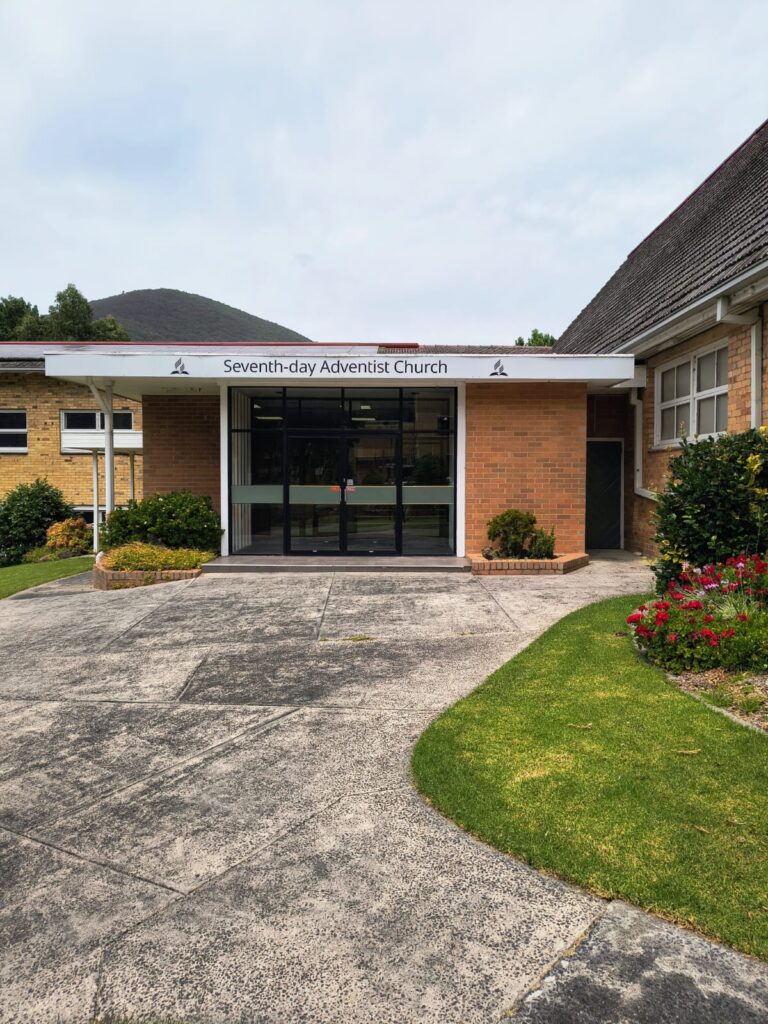
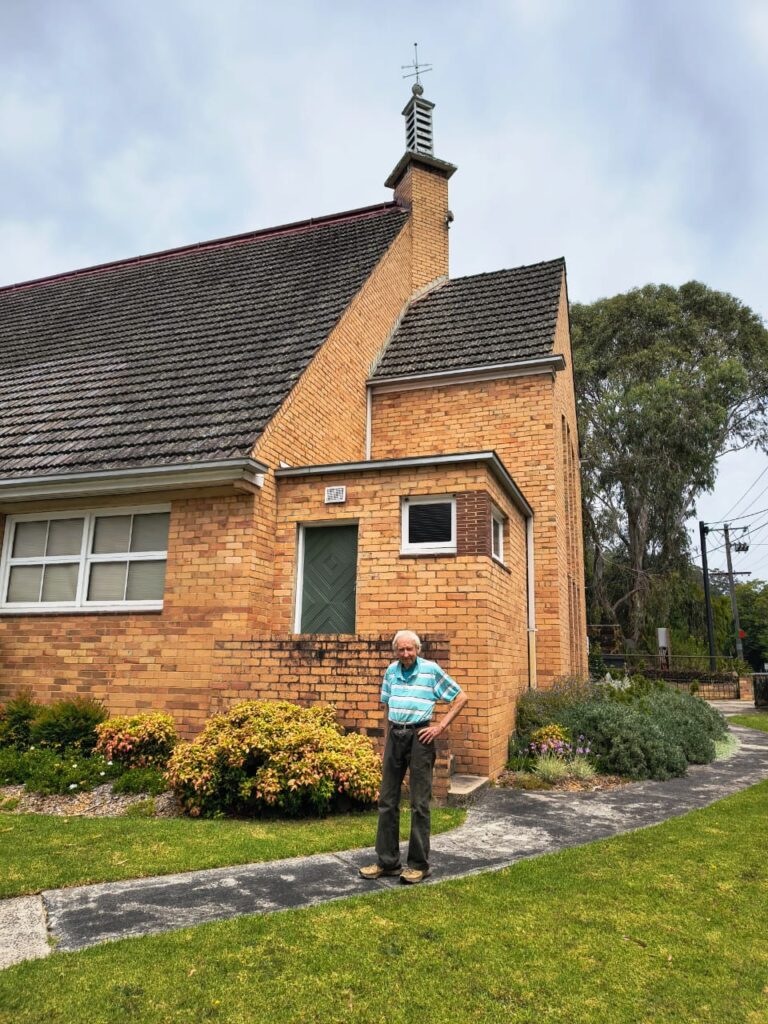
The Redwood Forest is the highlight of our trip. Dark, cool and sacred, stepping into it during a hot summer’s day is like entering an entirely different universe. After lunch, we take a one-kilometer walk beside the river, enjoying the birds, gum-trees, tree-ferns, soothing sound of rushing water, the fresh, fragrant air, and something else besides.
Warburton, Stan and the Redwoods affect me in the way that Proust’s madeleine affected Proust. We were devout Seven-day Adventists until I was nine years old, and during that time, the highlight of each week was the Sabbath. On Saturday, we went to church, ate lunch as a family or with the church community, did no work at all, and spent the long hours of the afternoon walking in nature. As children, even though we looked forward to the food my mother cooked, we resisted the monastic discipline of the day, often feeling as if it would never end.
On this short walk, on this perfectly ordinary Thursday, I perceive, vaguely but definitely, a glimmer of something far-off, something that I knew and loved and cherished more than forty years ago, a sense of divine connection that perhaps all my writing and painting is an attempt to re-establish. Quiet and peaceful, as ordinary and extraordinary as the rising up and going down of the sun, the joy of the Sabbath.
